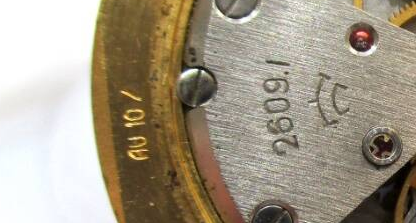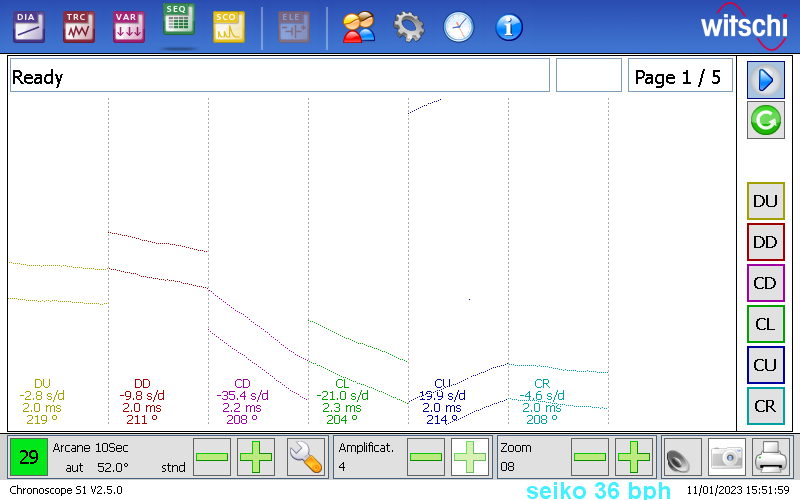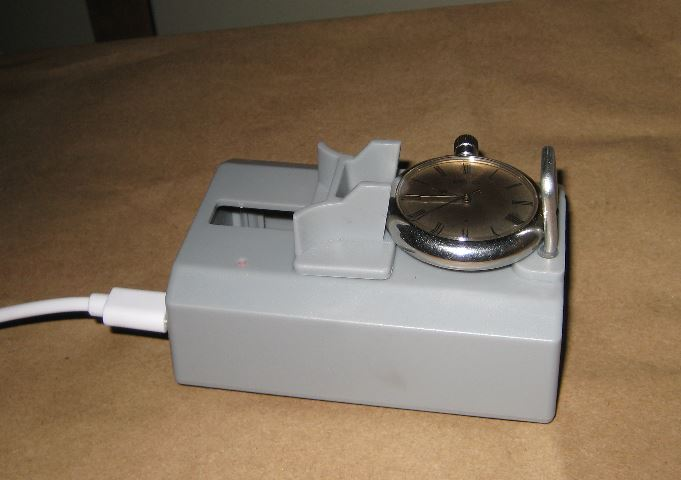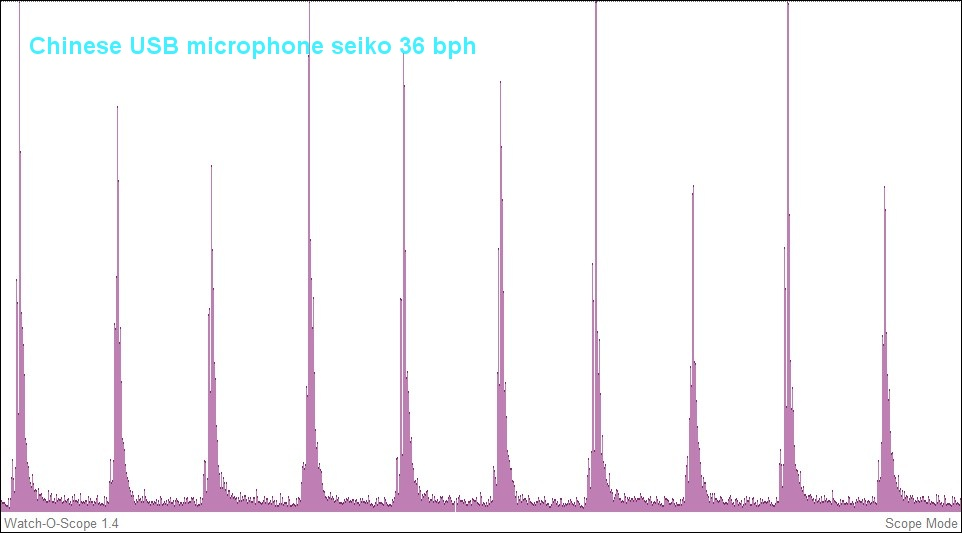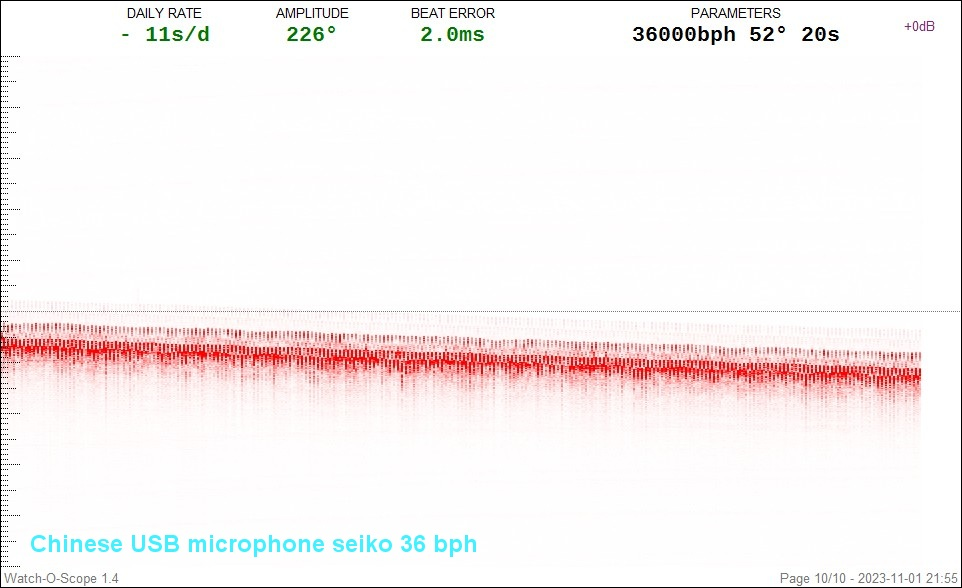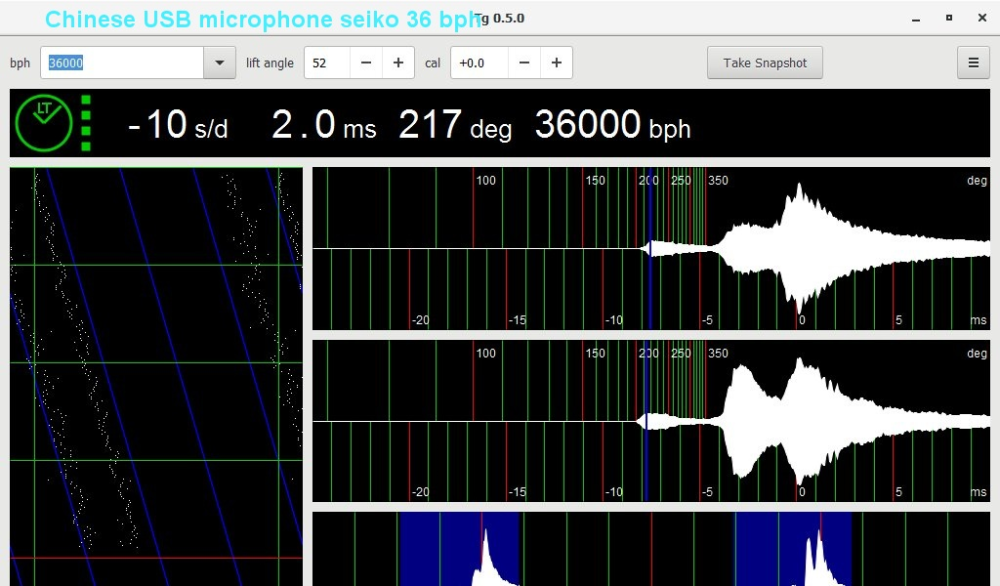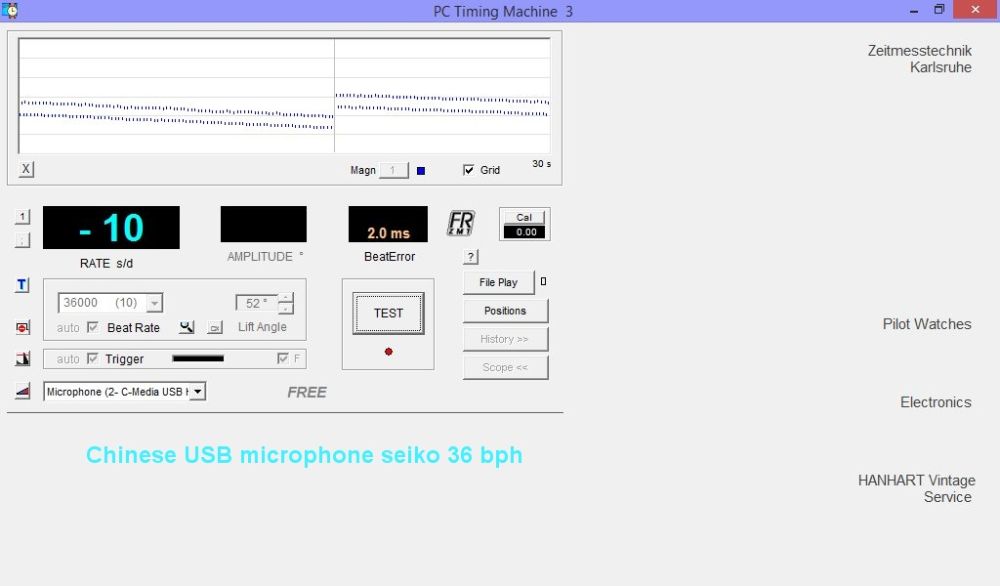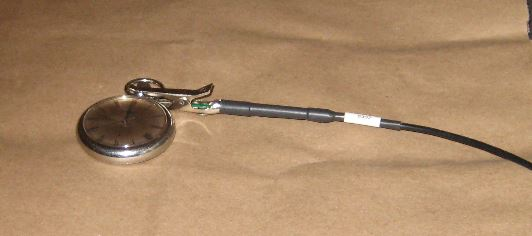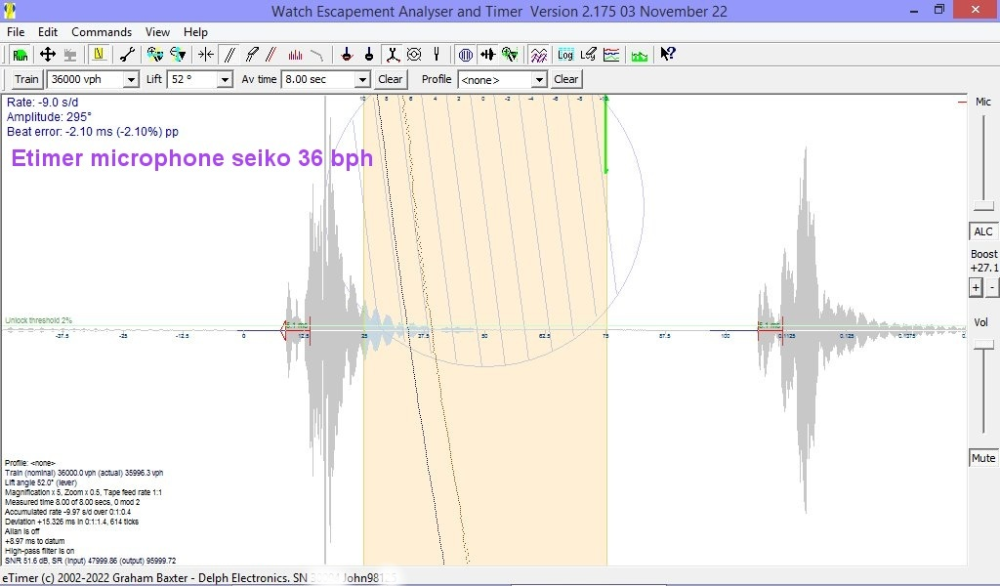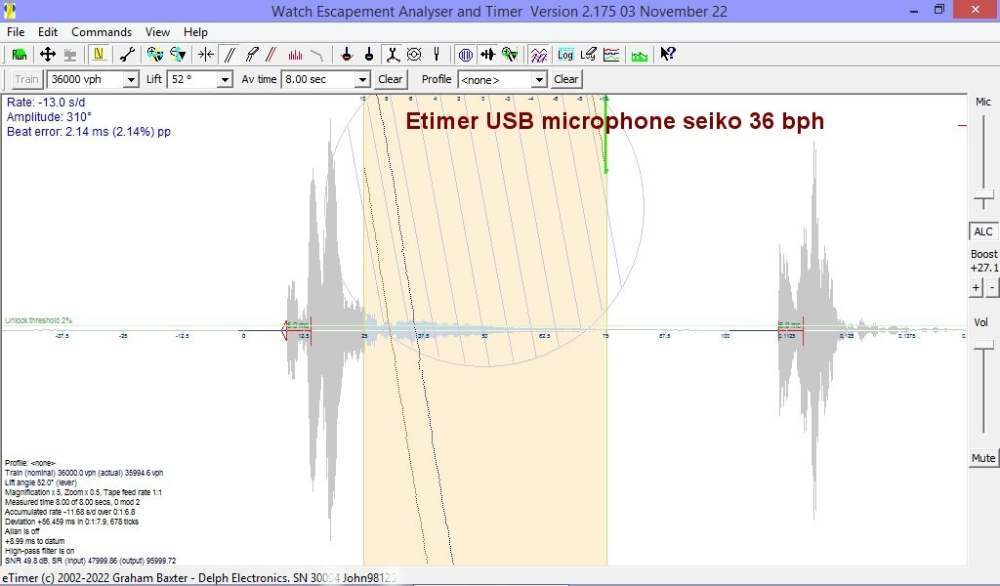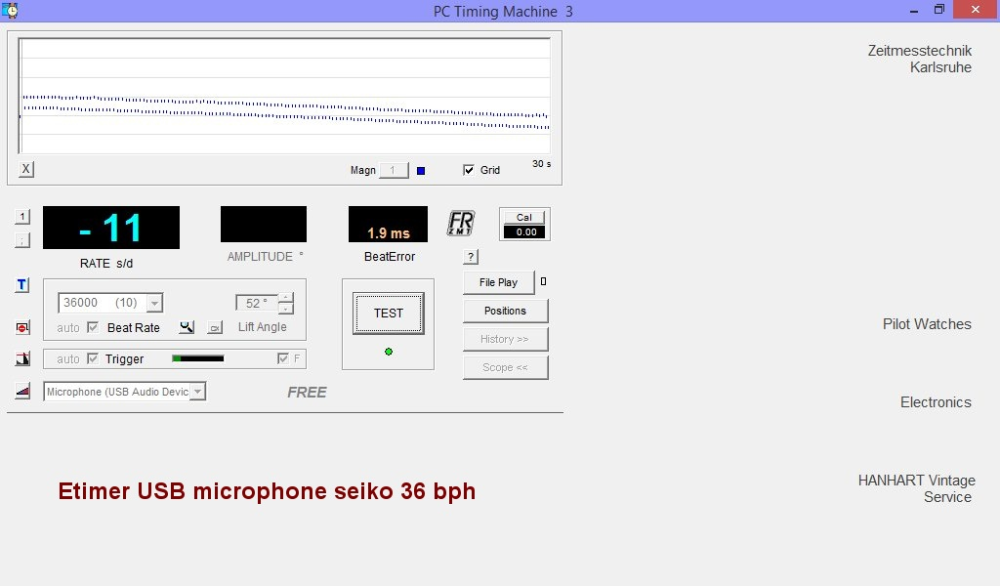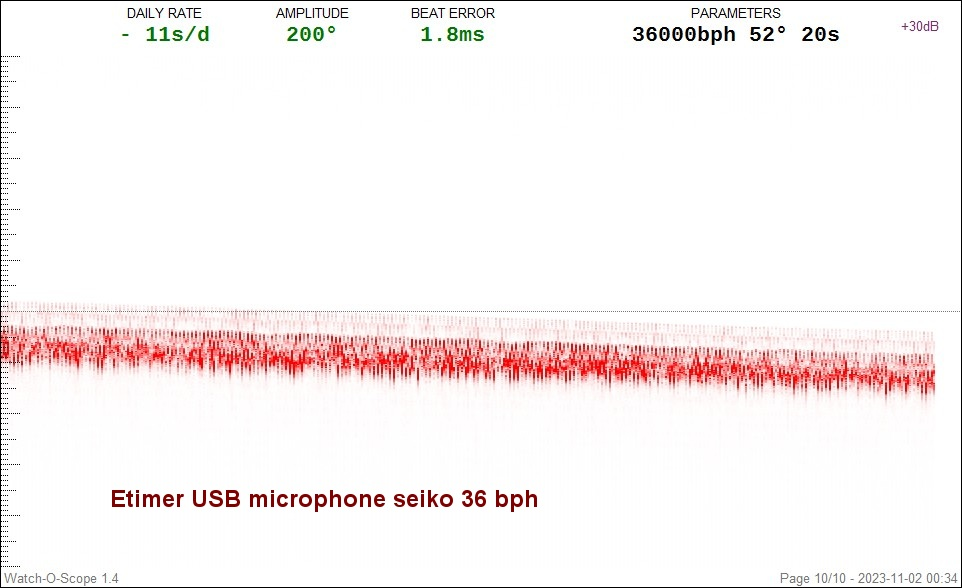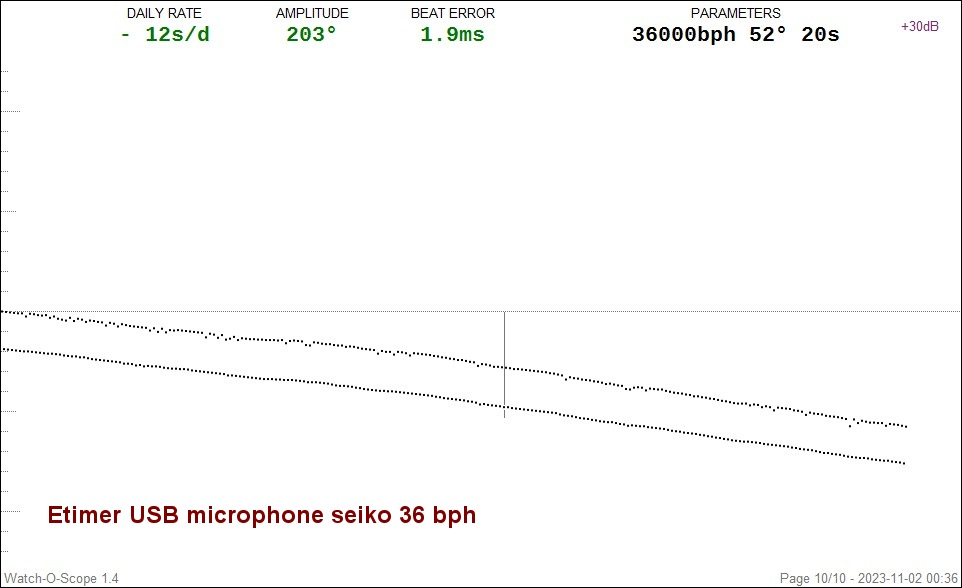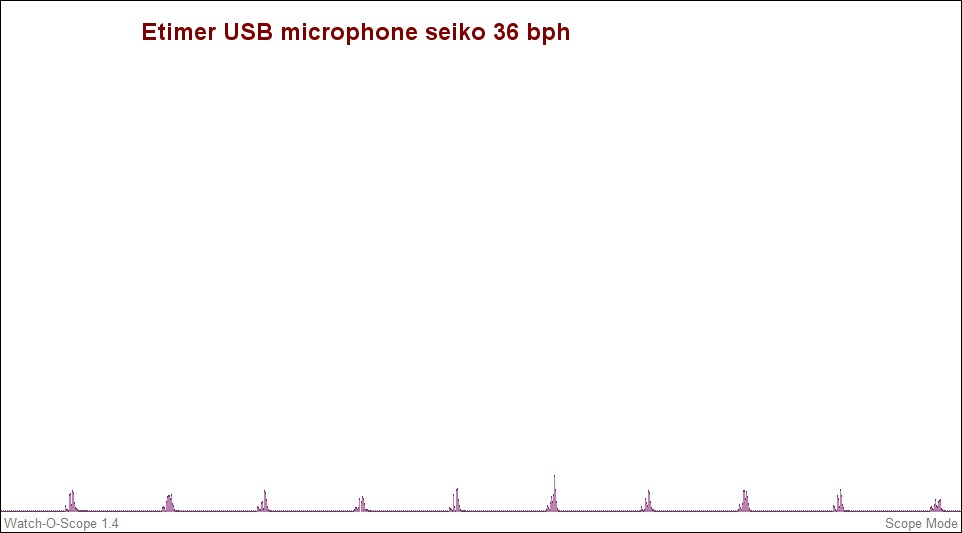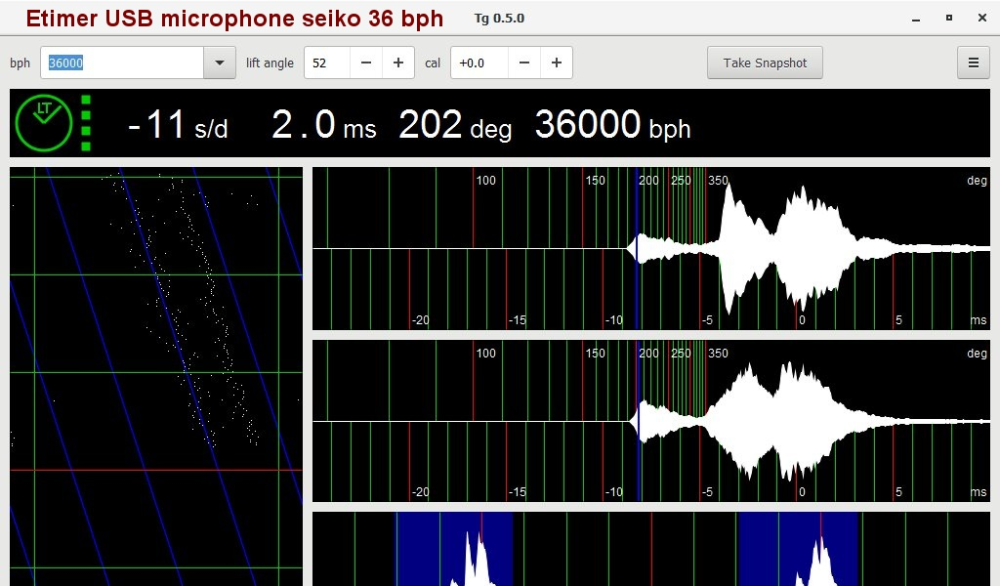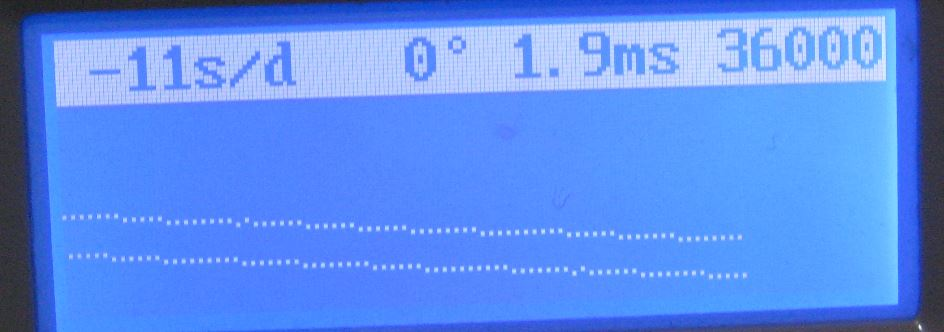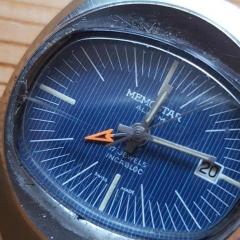Leaderboard
Popular Content
Showing content with the highest reputation on 11/03/23 in all areas
-
At Long Last the Fight for Parts Supply is Going to the High Court Cousins battle with the Swatch Group is now heading to the High Court in London. However, after the ruling in Switzerland, the case in London commences with arguments that you might not be expecting. Anthony Cousins explains the details below:- It has been more than a year since I last updated you on our legal battle with the Swatch Group to overcome their refusal to openly supply spare parts. Doubtless some of you will think that we have gone quiet because we have given up, but nothing could be further from the truth. When we started this process, I made a commitment to keep fighting until we won the day, or had exhausted every available means. That fight has continued and has now reached a significant milestone. In December of 2021, the Commercial Court of Bern gave a verdict that ran contrary to the most fundamental principle of British and European Competition Law, which is that no matter can be decided without consideration of the impact upon UK consumers and competition in the UK. We supplied the court with overwhelming evidence to show that watch owners are suffering substantially higher prices for servicing and repair, are waiting significantly longer for their watches to be returned, have an extremely limited selection of locations where they can obtain service, and are frequently obliged to have work done to their watches that is not necessary and that they do not want. We also asked the court to engage independent expert witnesses to advise them on how British Competition Law is applied and decided. The Bern Court refused to consider any of that evidence, declined to employ any expert witnesses, and determined that Swatch was “objectively justified in changing its supply chain. In so doing, the Bern Court did not consider at all any of the evidence we provided on the impact of Swatch’s cessations of supplies on UK consumers and competition in the UK. As we reported in August of 2022, we appealed against this ruling to the Swiss Federal Supreme Court (FSC), pointing out in detail why the interests of consumers and competition are always paramount. Our experience of the FSC has not been good. Twice before the Bern court ruled in our favour, and on both occasions the FSC changed the Swiss Civil Code and found in favour of Swatch. Although our arguments were entirely correct, it came as little surprise when in September of last year, the FSC refused our appeal and found again for Swatch. It is outrageous that a foreign jurisdiction thinks it can alter the basis of a UK law, without even asking for any opinion on this from this country, and at the same time ignore a wealth of factual evidence that has been placed before it. I have no doubt that the Swiss judicial system is not a suitable forum to give rulings on British and European law, but explaining in detail why is an issue for another day. However, for you as the reader to understand what actions we have taken subsequently, it is necessary that you understand some basic points about why the Swiss had the right to rule on British and European law in the first place. Brexit had not happened when the case started back in early 2016, and an agreement existed between the EU, Switzerland, Iceland, Norway, and Denmark, called the Lugano Convention. This treaty deals with how cross border disputes between parties in the different countries should be managed in the courts, and in simple terms stated that all the signatories to the convention recognised each other’s judicial systems as being equal, and gave each other the right to rule using whichever country’s law was applicable. In our case this meant that a dispute between a British company and a Swiss company about a matter of British (and EU) law could be dealt with by either country’s courts. When we first wrote to Swatch about taking legal action, we told them that we would be taking them to the High Court in London if they did not resupply us within three weeks. To avoid that, they brought a claim against us in the Bern court without, however, telling us that they were doing this. But this did mean that the proceedings were supposed to be dealt with using British and EU law, not Swiss law. I am not going to detail the whole case again here, but for what follows to make sense, there are four significant points I must explain about how this relates to the Lugano Convention in our case. Firstly, the UK was (when the case began) bound by the Lugano Convention because it was a member of the EU, but when Brexit happened half way through our case, the UK was no longer part of the convention. The UK government applied to join the convention, and whilst waiting for a decision from the other members, held that any case started under Lugano rules would continue to be bound by them. Over a year later, the EU was still refusing to agree that the UK could join the convention, so the rules applicable in our case became somewhat less clear, and indeed before the final appeal was heard at the FSC, the Swiss courts declared that the convention was no longer applicable, and the final appeal was conducted under different rules. Secondly, all EU members use the same wording in their competition laws that appears in the EU Treaty, the only minor and required difference is that where the EU Treaty says ‘in the EU’, the UK Competition Act says ‘in the UK’. As part of the Brexit process, although the basics of UK Competition Law stayed the same, Section 60a was added to the Competition Act which allows UK law to deviate from EU law, so the two cannot be considered to be the same. Thirdly, under the terms of the Lugano Convention, if a matter is decided in one country then all the others are bound by it, and the courts of those other countries cannot review or overrule the decision, or hear the matter again, even if they are certain that the foreign decision is wrong. This is part of a wider legal principle known by the Latin phrase “Res Judicata”, which loosely translates as “This has already been Judged”. The point of this is to prevent a matter being repeatedly litigated, and to avoid conflicting judgements in different countries. Fourthly, under the terms of the Convention, the only action another member country can realistically take, is to refuse to recognise the foreign decision if it is ‘contrary to public policy’, but this has to be something other than the law applicable to the decision concerned, for example if one of the parties right to a fair trial was breached. As highlighted in the point above, it is not possible to argue that the Swiss courts did not apply Competition Law correctly. That would be ‘reviewing’ the case, which is expressly forbidden. Keeping these four points in mind, the actions that Cousins have now taken can be understood. When Swatch wrote to us in 2016 to say that they had lodged their claim with the Bern Court, there was a delay whilst we were waiting for the papers to be served on us. In that time period, we lodged our claim at the High Court in London in the expectation that the proceedings in Switzerland would not be admissible. Normally, a claimant has only three months to serve the papers on the other party, but because of the extraordinary nature of how the Swiss proceedings played out, we applied to the High Court for extensions to that time period, and in the end were granted a very exceptional ten of them. This meant that when the final FSC verdict came in, we still had a live claim that we could use. After lengthy consultation with our UK legal team, we identified two ways in which we believe the UK courts have valid reason not to recognise the Swiss decision, which in turn would allow us to bring the case again in the High Court, and have a British Judge decide a matter of British law concerning British markets and British consumers. Firstly, both the UK and Switzerland are signatories to the European Convention on Human Rights (ECHR), and it is contrary to public policy for the terms of that convention to be ignored. A crucial part of the ECHR is that parties in a legal action ‘have the right to be heard’. For this requirement to be met, it is vital that any evidence offered is considered by the court hearing the case. This did not happen in Bern. Secondly (as I explained above) after Brexit, UK Competition Law had the right to deviate from that of the EU. The Bern court did acknowledge the addition of Section 60a to UK law, but continued to regard UK law as being the same as that of the EU, and made its judgement on that basis. It is therefore true to say that UK Competition Law has not been applied at all, so it is not correct to claim that the matter has already been judged. In July this year, we served our High Court claim on Swatch (UK), and had the High Court start the process of serving on Swatch Group and ETA in Switzerland. The process of serving on foreign companies takes a few months, but Swatch UK received the claim within two days, and were required by the rules to enter a defence within six weeks. As we expected, Swatch responded by stating that this matter was already decided, and they applied to the High Court to have the claim struck out. We objected to the application on the grounds that I have explained above, and after some debate back and forth, it was agreed that there would be a one day hearing before a Judge in the High Court in order to decide whether or not the Bern verdict should be recognised in UK law. In simple terms, if the Bern decision is recognised, then there is little else that we can do. However, if the Bern decision is not recognised, then our current claim will continue and a longer hearing will be timetabled at which the evidence will be considered, and a ruling will be given under British Law. We are very confident as to what that ruling would be. On Monday of this week the administrative team at the High Court processed possible dates for the hearing, and it has been confirmed to us this will be the week commencing 26 February 2024. Whilst I am sure that there will be much interest within the watch repair world, this case has far greater significance. The Bern decision is not confined to watch parts, but covers wholesaling and other forms of distribution of any product in any market. If that decision is recognised, then small businesses in every sector who can not compete with the buying power of their larger counterparts will find themselves either out of business, or under the direct control of the manufacturers, and the big loser in the end will be the consumer. I never imagined when all this began that Cousins would end up fighting to uphold the basic principles of UK business law, but if that is what we need to do in order to preserve the right of our customers to continue to offer their services to UK consumers as they have done for Centuries, then that is what we will do. I will keep you updated as matters progress. Regards, Anthony5 points
-
I wasn't taught in either of my schools to polish the hole in the barrel/lid, only smoothing broach. As the barrel is brass or similar, there's a very real chance of charging it with whatever abrasive is used. Even if very fine that will wear the arbor over time.5 points
-
I do not see any differences among those who know what they do4 points
-
If the timegrapher reading is ok, it could be a loose cannon pinion. But if the watch is new, your friend should send it back to the shop. The moment you open the case, the warranty is void.2 points
-
Yes. I too have experienced what you are saying. But could it be because we tend to go for 'bargain' watches. And get more than we bargained for. I thinking of getting a 'bargain' watch from Japan, the land of honor and chivalry, then see what happens.2 points
-
The ratched wheel can be put in 4 different ways on the arbour, You must try all of them.2 points
-
Hi @Bluescrew, Actually, vibrating hairspring without vibrating tool is comparable with watching TV without armchair. It is more convenient to rest in armchair while watching TV, but it is still possible to do without. The main problem is where to source hairspring that will be suitable. And, the answer for me is usually in different Soviet and Chinese movements, I have plenty of them gathered to use their stones, screws, hairsprings and whatever will be useful. The hairsprings that seem to look suitable, have to be tested with the balance wheel. Usually the collet doesn’t fit to the place on the staff, but small ball of Rodico helps to attach the collet or the end of the bare spring to the balance for the coarse test, which will determine if the hairspring is proper for the balance wheel The idea is to find hairspring that gives little lower frequency, so shortening will bring the frequency to normal. BUT, at least 10 coils must remain on the spring – shortening it more leads to bad isochronism. Then, if spring passes the test, it’s collet may be replaced with the original one, or reamed in order to fit to the staff. Then, hairspring on it’s new place and balance is vibrated to find the correct length of the spring, then the remain cut and the overcoil formed. For the vibration I only need a big watch with the same BPH ticking loudly so I can hear it clearly, just like metronome. Look here, I have showed restoration of a pritty battered Omega 265 movement, which I believe has similar hairspring as 27.3 I have replacet it's hairspring with one from Poljot 2609.2H, as I remember2 points
-
But I bet you don't have a setting lever spring for the Movado I'm restoring1 point
-
1 point
-
Are you suggesting the YouTube gods are not to be trusted ? Oh no i will erase my memory of everything I've ever seen on YouTube . Yes there is some terrible advice out there.1 point
-
I assume by others you mean the gods that make YouTube videos? Schools what silly places versus the gods of YouTube. In the school did you polish every single barrel with a smoothing broach or only If you are doing some sort a repair to the barrel itself? Then for those polishing the barrels what about the arbors?1 point
-
Yes like a mechanical watch no shortcuts for servicing. Be warned the video skips things that ideally should be done when servicing a quartz watch. He does not have the electrical checks that really should do because of course he probably doesn't have the test equipment and neither do you. In other words you just have to assume that your circuit is working because you don't have the proper equipment and you can't measure the current consumption to see how well things are working. Then as this is a servicing video and not necessarily a procedural video he's missing a really important step. This is where he carefully disassemble such as all the parts and then in the next video he reassembles but in between the watch was run through the cleaning machine which you do not have. Now we get interesting conflict here you would like to learn? But you don't want to spend much money and unfortunately this is watch repair were an endless supply a tools conceivably will be needed. I know how but another video I'm trying to think about what I want to give this video thumb down because it is exactly what you want to do although for unknown reasons he takes the front of the watch a part. The only reason I'm giving you the video is it's the same caliber and he's basically doing a quick cleaning and it's a miracle the watch will run at all the way he's doing this. https://youtu.be/vT6INP4VjE0?si=IUu8sXTl9Pviv93W Oh if you think the hands look fragile just wait until you try to put the gear train of the rotor back together. The videos of putting quartz watches together might look simple but it's not really simply get the gear train in. One thing the rotor is magnetic it keeps wanting to stick to everything in the wheels typically don't like to stay wherever you put them. Oh and there's a classic problem with YouTube videos they never show you the problems they only show you how easy and simple everything is. So a lot of times people come to this discussion group with the thought that watch repairs going to be super simple easy because they saw the video that makes it look easy. To properly serviced this watch is going to be disassembled like marks video shows. Cleaned was some sort of cleaning procedure in other words a solvent until it's all nice and clean. Reassembled and you could probably get by with two lubricants some grease for the keyless and setting parts and that extremely light synthetic oil for the rest of the watch. Unfortunately you're not going to find those lubricants on Ally express as quick look shows mystery oils. In other words zero specification so you have no idea what they really are or are not.1 point
-
No need to even open the box. I think the bottom line is, don't worry about polishing barrel holes, as long as they are reasonably smooth. The barrel is brass and the arbor is much harder steel. There's no mention of polishing the barrel holes in any of the literature I've looked in, and @nickelsilver says he wasn't taught it in school. So add it to the list of "things to not worry about".1 point
-
As long as the paper doesn't shed any abrasive particles.... There is a lapping compound called Timesaver that is for lapping soft metals that are prone to charging (imbedding particles). I don't know exactly what it is, but it works for a while and eventually stops being abrasive. I know machinists who love it, but never tried it and don't know any watchmakers who have.1 point
-
The wheel IS ROUND, but it's hole is out of center. But You video is not prooving it clearly, as the wheel is actually not centered by it's square hole. But, it is still pritty obvious that the hole is out of center, even without this video. BUT, if the sqyare part of the arbour is cut out of arbour center too, this can compensate the wheel's hole out of center, if the wheel and the arbour are assembled/matched in the correct way1 point
-
I can only say that berilium bronze is traditional material for many kind of clocks anf cheep roskopf-type watches hairspring, where the balance wheel is made of brass. But, I don't know if berilium copper is similar to it in it's features.1 point
-
Yes, you can use just about any oil but some folks like to use the same as you lubricate the barrel arbor with. If you aren't intending to fully clean the barrel before assembly then definitely use the same as you would use for the arbor.1 point
-
Polywatch ia also based on aluminium oxide (just found the tech sheet on CousinsUK). For the Cape Cod cloth I can only find "cotton/polyester cloth, vegetable oil, inert polishing compound, destillates, perfume". Thanks! That'll make my life easier. Do you use any oil on the smoothing broach?1 point
-
Not sure if its a standard proceedure, just seemed logical to polish the inside to reduce friction. A toothpick initially with autosol which does polish quite well, the polinum might be overkill but i had it,so why not. At that level of grit very unlikely you are removing noticeable materialand only takes a minute. Since then i have seen others do very similar.1 point
-
Its an old timepiece that he has acquired - now you mention it, when I changed the time the hands spun very very easily with almost no friction, I didn't assign any significance to it at the time but now you mention it, it makes a lot of sense, so I think you have nailed the problem!1 point
-
I'm a bit cynical about how much gold there might be, but some of the USSR era watches are stamped Au10 Whether they *actually* are plated with 10 microns of gold, or perhaps someone just had a handy Au10 stamper is another matter, however since these watches were probably conceived for the communist elite and the export market, they may well have a snifter of gold on them. 10 micron plating is such an insignificant amount that it probably adds less than £4.04 to their value. A micron is 0.001 of a millimetre. EDIT: Just for the record, anything plated with less than a micron of plating is considered "flashed" with gold, and this typically is done on items where there will be very little wear. On the other hand anything with one micron or more is considered to be plated. The thicker the plating, the longer it will typically last. Watches, since they experience high wear should be plated with 10 microns or more (40 microns or more for a quality piece). Obviously this does not translate to very much gold by weight, so a gold plated watch is not really worth significantly more than an equivalent un-plated item, except of course for the aesthetic value of the gold. A 9ct or more gold watch is worth at least its weight in gold at the percentage rate for the particular carat value, or to be more accurate, worth the weight of those parts of the watch that are actually made of gold. Unfortunately this of course means that a lot of historically interesting watches have been destroyed to recover the gold from their cases. In summary, a USSR era Raketa, Pljot etc. with Au10 plating is not going to contribute significantly to your pension fund, unless it is a particularly rare or interesting watch, and I don't think our 404 club candidates quite fall into that category unfortunately.1 point
-
Same as @Waggy go for option2 buy the refitting leg tool and use the original dial. this tool is not expensive as you can see and it's very useful. I glue the leg with epoxy but other glue can be used. If you fell that it's too complicated you can go also for very simple double sided sticker to fix the dial like this https://www.amazon.com/USHOBE-Stickers-Sticker-Double-Sided-Double-Side/dp/B0CFNFG5K6 it's less watchmaker style but it's doing the job1 point
-
I think that was a common process, same principle as a vibrating tool except you have the convenience of a purpose made frame with the genuine article. I do have a Luthy tool and have used it twice, its great fun1 point
-
As my watch arrived and thought I would do it timing machine review with it. It might give us an answer to the question of is the original posting persons watch having an issue or is it the microphone giving it an issue or do we have no idea? I took the watch to work to run a timing cycle on it to give us say baseline basically. It also shows you what an extremely expensive witschi timing machine can do with its automatic microphone. Now thinking about the automatic microphone the timing positions don't end up being right because the dial was up normally have dial down and then we end up with the left and right usually gets swapped around so up and down for the dial are not necessarily right but they are up and down the dial it still gives us an idea of what's going on Amplitude for a fully wound up watch the little lower than would like to see obviously the watch needs to be serviced. Another thing to do someday in the future. Then normal timing should be about 20 to 30 seconds this particular setting for the machine is really fast which as long as the watches running fine is okay but normally should have longer sampling times Then on the oscilloscope we get something interesting that is the amplitude is way too high? But on the oscilloscope it tells us where it's triggering and I put some marks its triggering in the wrong place should be triggering on the second Mark and because it's triggering on the wrong place in the oscilloscope mode it's giving us a happy amplitude that doesn't exist. We'll see more of this problem later on Here we see a little more the oscilloscope the audio sound of this watch is rather interesting is that of course is running really fast and they hairspring is stiffer than you normally find solid as a little different ringing sound which conceivably may bother some timing machines as we'll see later on So for the software I started off with the Chinese microphone to see what all the various software have will do with it. The oscilloscope in watch-o-scope is pretty good little One of things the software as is raw mode. It's kinda like turning the oscilloscope on its edge and looking down at it and then stacking them together is a really looking at a whole bunch on oscilloscope traces across the page of that makes any sense at all probably not but it is a interesting mode.. This is where if you had background noise like they hairspring was bumping into something it would be a lot easier to see than in the normal oscilloscope what tends to go by so fast and slow harder to find patterns. Then to the other software same microphone and I hate their graphical display it makes it look like the watch is having a serious issue. There is supposed to be some newer versions but they don't run in the PC. But this is what we want to see is how this compared with yours and at least the numbers look more or less correct. On the different software oh and I never calibrated the software in any of these because when you change the microphones depending upon things that changes the calibration which is why some of the numbers may be off but this software does seem to work really well much better than some of the other stuff which gets unhappy with things at times Then this software didn't like the USB microphone with the high-frequency watch. I've used it with lower frequency watches and at least from memory it seems to work so I switched to its microphone which initially it plugged into the PC or in this case a netbook Now notice on the oscilloscope have the amplitude it looks really spectacular and if you look at the oscilloscope were not triggering where were supposed to be. The software it typically works fine but when you're playing with four different pieces of software different microphones I probably don't have all the settings quite correct. Otherwise to run all these tests would take way more time than is willing to spend Oh and yes the software can do a lot of things I'm just using it to quickly evaluate the watch for the purposes discussion Then minor problem with the microphone plugged into the netbook none of the rest of the software recognized its existence at all. Even though the software above had no problems with its. Fortunately it originally came with a USB adapter and I plugged that in and continued running the tests. Oh and when you plug the USB adapters in of course you need to recalibrate which as I said I didn't do so there will be minor Timing differences Minor differences from this is the last one probably differences of how things are processed. But you will notice rate looks ride amplitude looks right etc. etc. This is an interesting the oscilloscope is considerably less than in the previous version seems to work though but this is where normally normal people would be trying to run the four pieces of software so you and adapted whatever you have and each time it should work consistently. Once again the graphical display sucks as far as I'm concerned but the numbers and stuff look fine That is much as free software is free to get it to work of course you do have to have the proper pickup like I've shown in images reverses your bug microphone or whatever's being used way up above in this originally done. I was using microphones not designed for picking up watches will be problematic. More than once in this discussion group we've gone off in the wrong direction based on software that wasn't functioning properly. Then Chinese 1000 timing machine. Initially it seemed to take a little along her to figure out what it was trying to do but once it figured it out it's working perfect. One of the reasons I like the Chinese timing machines or any physical timing machine is they just tend to work. Although for those nitpicky people the witschi timing machine is both hardware and software particular machine we have is running Windows CE. I occasionally have to turn it off and Back on because it gets confused over something. Oh and as far as I know the watch that I received hasn't been serviced in any time I have no idea when. There's no marks on the inside case back I doubt it's ever been serviced and based on the case back itself I doubt the watch was used very much at all does seem to be a really nice condition. Although the regulator isn't quite right like to see it and it is a little out of beat but still very interesting watch to have.1 point
-
Hi Waggy, I had a go at my own watch straps for the first time a few weeks ago. I will not be giving up my day job but the ones I have made are passable(ish)... So here are my observations as a fellow beginner. I started with the following kit: Super-basic all-in-one leather working kit off ebay for £20 (contains skiving tools, knives, needles, slickers, pricks etc...) A tube of Evo-Stick contact adhesive £6 Leather dye-pen £8 (the exact colour depends on the leather you are working with and the colour of the edge of the leather) Tokonole edging gum 120g £13 (this is going to last a long time) Some different types of linen thread (flat and round) Some 1mm(ish) leather scraps £15 25cmx25cm (make sure the scraps you get are long/wide enough, especially if you are doing simple one-piece fold-over straps, should get a few straps out of this) I bought all of this on the understanding that the end result would look rubbish and I would give up after the first attempt so I went cheap on the tools. Even then, I was not doing this to "Save Money" on straps. The cheap tool kit was actually serviceable but clearly not professional. I independently bought a second multi-headed edge skiving tool and frankly it was a waste of money as the skiving blades we dull and did not cut. The one in the kit was sharp. The simple diamond pricks that came with the kit (you can also get from ebay/ali-express) do work, however I noticed that they tend to cut the leather at the corners of the hole which can be wider than some of the thinner threads. I have bought some (significantly) more expensive "olive-shaped" pricks to see if this resolves that particular issue. Im finding 3 and 4mm spaced pricks to be appropriate for the straps Im making. Im currently using an existing strap as a template and eyeballing the rest with a metal ruler - possibly not the best approach... Good luck! Best, Bob1 point
-
Interesting? I was looking at the last two mainsprings I bought $10 each and by the time you add in shipping and tax is up to $28 for two springs let's make that $30 that makes them $15 each shipping. So Cousens is cheaper than that I will remember that the next time I need some mainsprings Nice to know that I'm getting ripped off on eBay I thought that was a bargain price.1 point
-
Meant to put the starting bid at £20 not buy it now.0 points
-
I have no personal experience of buying watches from Japan, but I'd be extremely surprised to learn of any systematic scamming from Japanese sellers, so you should be safe I think it is common knowledge and consensus that the ethics of Japanese culture is first-class. I just talked with my daughter who's been living in Tokyo since the beginning of August and she mentioned she has never felt safer (unlike the war zone Sweden has become with blown-up houses, firefights on open streets, innocent people injured and killed, and it happens more or less every day).0 points





.thumb.jpg.cb17a66989f1e796fd4217db2e9ca9df.jpg)


